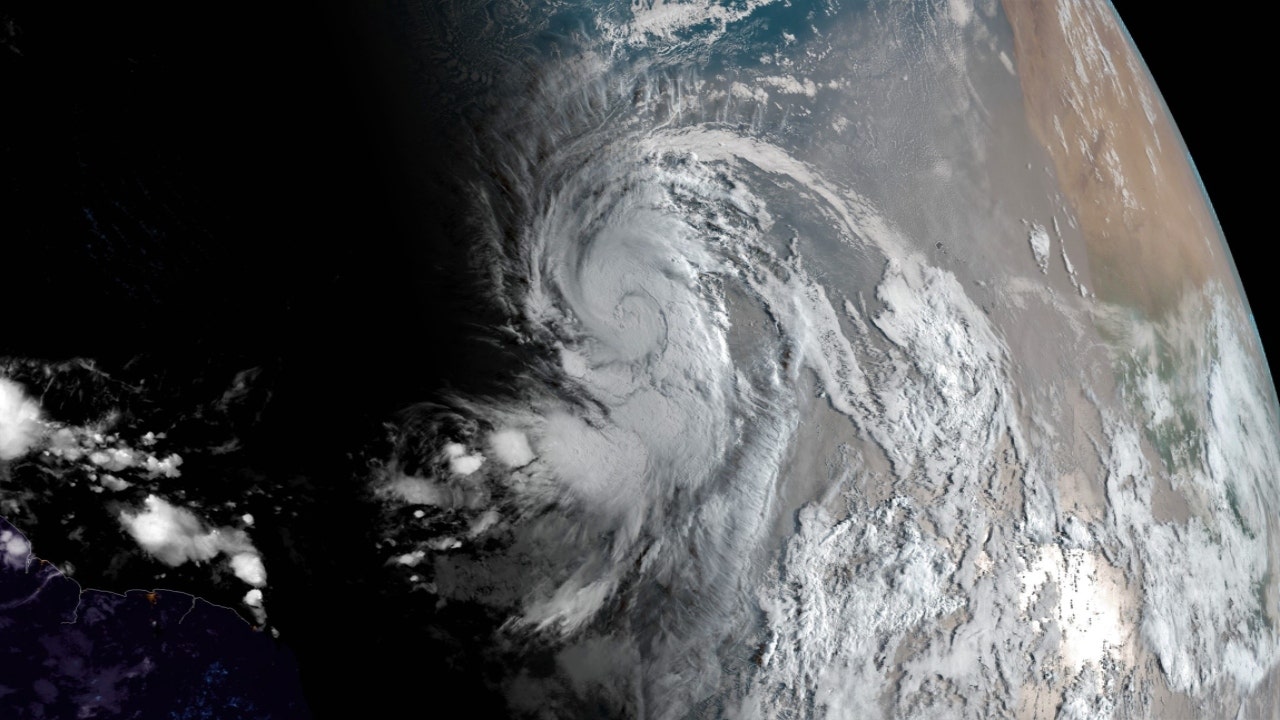
Despite being forecasted to continue strengthening and peak as a Category 4 hurricane, Earl's inner core was repeatedly interrupted due to dry air entrainment and it fluctuated in strength the following day while passing well to the east of Bermuda despite being over extremely warm sea surface temperatures of around 84–86 ☏ (28–29 ☌). Three hours later, the hurricane had attained peak sustained winds of 105 mph (165 km/h). By 03:00 UTC on September 8, Earl had reached Category 2 strength, still moving northward Hurricane Hunters data showed it to have developed an eye of almost 60 mi (90 km) and a fairly symmetric wind field. Later that day, the shear quickly diminished, resulting in Earl becoming better organized and strengthening into a hurricane at around 00:00 UTC on September 7. Earl's intensity continued to fluctuate throughout much of the next day due to ongoing effects of westerly deep-layer shear. A burst of deep convection occurred near the center of Earl during the evening of September 5, and a Hurricane Hunter's mission into the storm later that night reported that it briefly strengthened to near hurricane strength. After struggling against high wind shear for many days, the disturbance was finally able to organize itself and developed into Tropical Storm Earl early on September 3. After moving west across the eastern and central tropical Atlantic, the disturbance was met with environmental conditions east of the Leeward Islands that were only marginally conducive for a tropical cyclone's development. It continued moving northeast before dissipating on September 15.Įxtratropical cyclone, remnant low, tropical disturbance, or monsoon depressionĮarl originated from a tropical wave that was producing widespread disorganized showers and thunderstorms when it formed off the coast of Africa on August 25.

Earl reached peak winds of 105 mph (165 km/h) twice before quickly becoming extratropical off the coast of Newfoundland on September 10. Earl eventually reached Category 2 hurricane status, before repeated dry air entrainments caused the storm to fluctuate in intensity. After impacting the Caribbean, it shifted northward and started to intensify. Strong wind shear halted Earl from rapidly intensifying, and it maintained tropical storm status. Earl started to shift northward after impacting parts of the Caribbean. Eventually, the system was able to organize enough to be designated as Tropical Storm Earl on September 3. The wave struggled to develop over the next week as it moved west-northwestward in a marginally conducive environment. The fifth named storm and second hurricane of the 2022 Atlantic hurricane season, originated from a tropical wave that moved off the coast of Africa on August 25. Hurricane Earl was a long-lived, large hurricane that mostly stayed out at sea, but brought heavy rain to Puerto Rico and Newfoundland.

Part of the 2022 Atlantic hurricane season


 0 kommentar(er)
0 kommentar(er)
